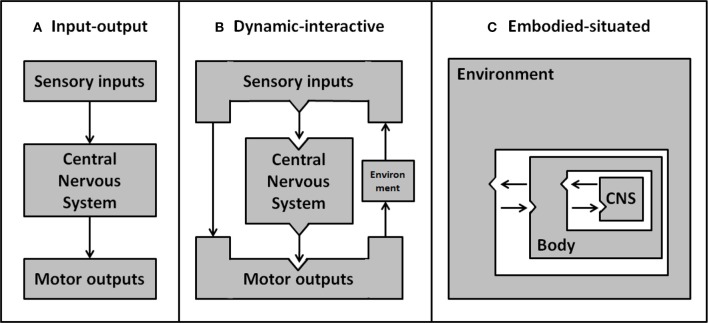Figure 1.
Development of psychological models about the interactions between environment, body and central nervous system. Early simple input-output models (A) ignore the environment and represent sensory inputs as being processed discretely to produce motor outputs. More sophisticated dynamic-interactive models (B) include environmental factors. By this account, direct feedback from motor output can interact with, and act on, the environment—resulting in a change to future sensory inputs. In embodied-situated models (C) the nervous system is embedded within the environment through the body. From this perspective input and output systems are integrated rather than discrete separable elements, and the nervous system is inherently linked with the environment—as parts of a dynamic system. Adapted from Chiel and Beer (1997).

